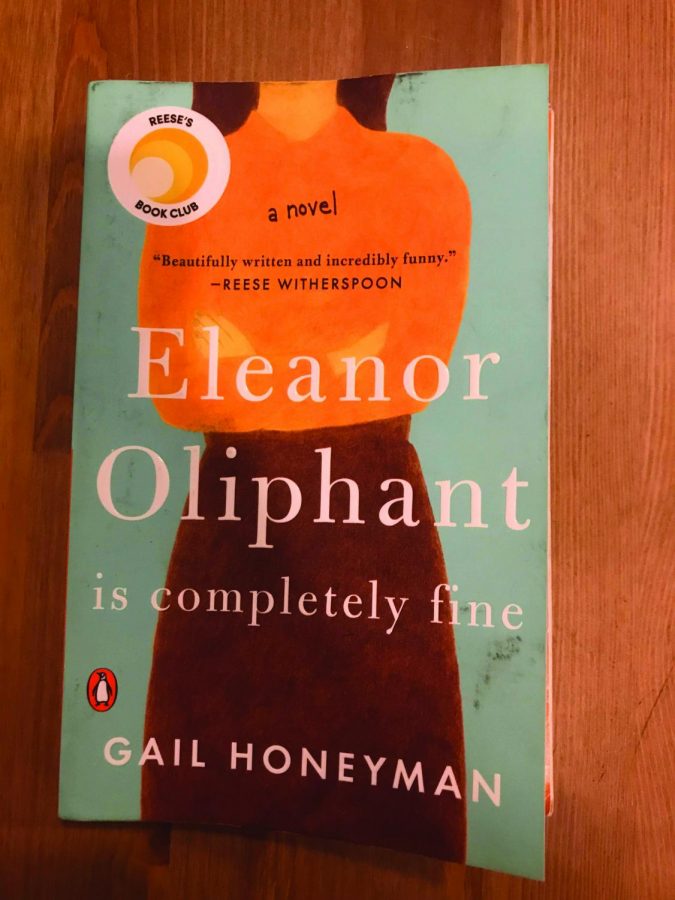She’s a little kooky and generally awkward, but she’s Eleanor making her way through her maze of a life and she’s been doing fine, so far.
“Eleanor Oliphant is Completely Fine” by Gail Honeyman tells an endearing, and often relatable story of a routine-oriented woman whose life shifts tremendously when she and the scruffy IT guy at work get jumbled into the life of an elderly man who essentially shapes the way they continue to live their lives.
Though fictional, their realizations greatly reflect the struggles of acceptance and normalcy many of us face within our own lives.
Eleanor seems like she has it together, but going home every night to an empty apartment and a kitchen stocked with just tortellini and vodka slowly loses its comfort amid weekly phone conversations with her jailbird mother.
“Mummy” we learn is far from Eleanor’s comfort, and clearly the force behind her troubled and dark past. It’s never directly focused on, but within this part of the story there is an unspoken sadness based around their tense relationship.
When Eleanor meets the big-hearted Raymond at work and they aid an elderly gentleman, Sammy, after his fall in front of a grocery store, their friendship grows organically.
This new, unexpected bond pretty much saves this atypical woman from a life her mother aims to scare her into.
With this friendship, Eleanor sees herself progressing as she expands her social life, beats her routine and moves up the ladder at work.
However, all this change, no matter how good it may be, does not come easily for Miss Eleanor Oliphant.
Depression and self-doubt continuously hit the quirky 30-something-year-old, causing blips in her positive character development.
She falls back into isolation and unhappiness, but this time she has someone who cares enough for her to get her back on track – Raymond.
These characters feel like real people. Their moments of kindness, silence and unsure dialogue reflect natural human interaction.
Not to mention, Eleanor is just hilarious when she examines new concepts in her mind.
“Was this how it worked, then, successful social integration? Was it really that simple? Wear some lipstick, go to the hairdressers and alternate the clothes you wear?” Eleanor ponders after she gets some newfound attention in the office.
Author Gail Honeyman perfects this tale of subtle heartache with giggly rhetoric led by a socially awkward, out-of-the-ordinary heroine.
The book also carefully examines how moments from our childhood may later affect us in our adult lives and the way we curate relationships with people.
It explores how adults may also exhibit tendencies that are harmful in ways that many would think they should outgrow past the age of 16, such as when Eleanor develops an immense crush on a local Glasgow pop-star who is simply out of reach.
Eleanor’s loneliness turned happiness, and then depression to stability speaks for the lives of many and proves that with the right people behind you there is always room for growth and self-betterment.
In many ways, we can all see a bit of ourselves in Eleanor Oliphant.
Soon to be made into a major motion picture, the emotions of these warm characters should translate to the big screen beautifully.
Life may have been fine for Eleanor, but by the end of the novel she learns to start living.










